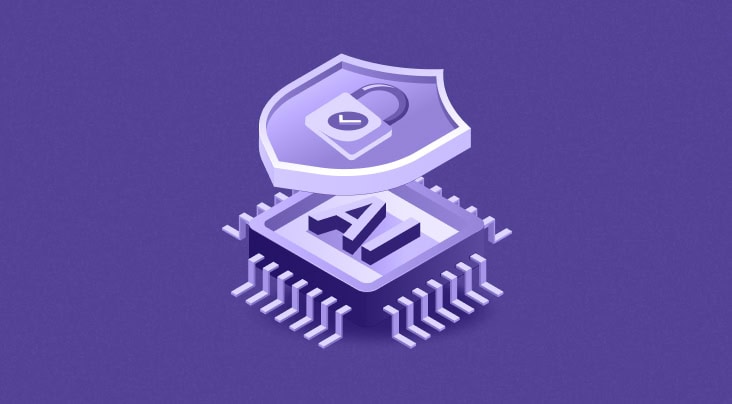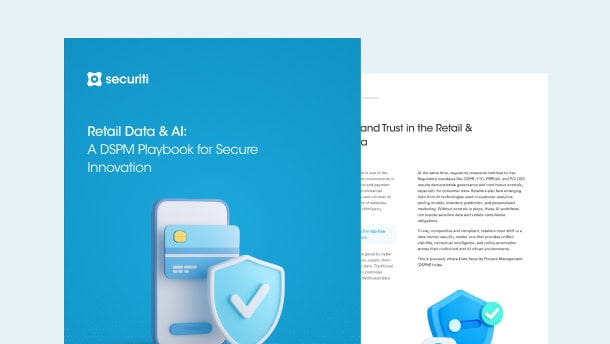The Artificial Intelligence Risk Management Framework (AI RMF 1.0), developed by the National Institute of Standards and Technology (NIST), offers a structured approach to handling risks related to the design, development, deployment, use, and assessment of AI systems.
Although a voluntary tool by nature, adopting the framework poses several benefits for organizations struggling to navigate AI waters. At the same time, it can be overwhelming to fully comprehend the comprehensive framework and ensure its adoption as recommended in the guidelines. Consequently, organizations may encounter several challenges in implementing the NIST AI RMF, but it is important to recognize and overcome these challenges for a number of reasons.
Common Challenges in Implementing the NIST AI RMF
Implementing the NIST AI RMF involves navigating various challenges. Here are some common challenges that organizations may encounter:
Challenge 1: Alignment with Existing Policies and Regulations
Aligning the AI RMF with current corporate policies, legal requirements, and risk management frameworks may be a huge challenge for organizations. This may need significant amendments to current governance frameworks and procedures.
Challenge 2: Complexity of AI Technologies
Even though the birth of AI dates back to the mid-1900s, it is still an evolving field in today’s digitally advanced, data-driven world. Because AI technologies may be broad and complicated, it can be challenging for businesses to completely comprehend the workings, constraints, and possible risks of these tools. As such, there’s a constant need to stay updated with recent developments and strategize how they work best for the organization.
Challenge 3: Data Management Issues
One of the biggest challenges in training and testing AI systems is ensuring high-quality, relevant, and impartial data. Poor data quality might result in incorrect AI predictions and choices. Organizations constantly face the challenge of determining whether their data stores contain correct data that can be mapped to the right data owner and whether that data is updated.
Challenge 4: Resource Allocation
Implementing the NIST AI RMF requires substantial time, resources, and skilled personnel. Effective resource allocation may be difficult for organizations, especially in industries where AI technology is developing quickly. This is particularly a challenge for small and medium-sized organizations that lack the finances and personnel to invest in AI technologies, as they are typically heavily invested in ensuring adequate revenue streams to stay competitive in the industry.
Challenge 5: Technical Expertise
The NIST AI RMF can undoubtedly be technical and confusing for many individuals, particularly those who are new to the AI industry. Expertise in risk management concepts and AI technology is a prerequisite for the NIST AI RMF. Organizations may lack the in-house knowledge and expertise required to assess and mitigate the particular risks posed by AI systems.
Challenge 6: Regulatory and Legal Compliance
It may be challenging to stay abreast of and comply with the many constantly evolving regulatory frameworks and laws across geographies. On the other hand, with AI still in its infancy and development phase, understanding and managing the legal fallout from AI responses, especially in the event of mistakes or when AI systems function, is still a grey area for most organizations unaware of the risk and reward of AI.
Challenge 7: Stakeholder Engagement and Communication
With multiple stakeholders involved in the adoption phase, acquiring support from all relevant parties, such as AI developers, users, senior management, and impacted parties, might be more challenging in reality than on paper. Additionally, explaining AI risks and how to manage AI transparently to stakeholders—some of whom may not have technical backgrounds—can cause significant delays.
Challenge 8: Data Privacy and Security
In a data-driven realm dominated by data protection laws such as the European Union’s General Data Protection Regulation (GDPR), California Privacy Rights Act (CPRA), and others applicable to the business, additional frameworks such as the NIST AI RMF can be all the more challenging and overwhelming.
Challenge 9: AI Governance
One of the growing challenges faced by organizations is establishing AI governance. Without governance and adequate safeguards in place, there’s a high chance of attracting malicious actors and exploits.
Addressing the Challenges in Adopting NIST AI RMF
Understanding and addressing challenges posed by the adoption of NIST AI RMF is critical for several key reasons:
Establishing AI Governance
Govern
Organizations can address this challenge by using the framework’s Govern function to foster a risk-management culture. It provides a structured approach for implementing policies and practices and outlines processes that foresee, identify, and manage AI system risks. Moreover, it establishes an intersection between company principles and AI system architecture, facilitating ethical AI lifecycle activities.
Map
Organizations may utilize the Map function to understand AI risks and to foresee, assess, and deal with such challenges. It fosters comprehensive AI documentation, from testing to use cases. Organizations may use it to project the impact of AI systems, identify risks, better understand contexts, identify system malfunctions, and identify real-world application limits that may have detrimental implications.
Measure
Organizations may utilize the Measure function, which assists in reducing the risks associated with AI. This function analyzes, assesses, benchmarks, and tracks AI-related risks and their effects using a combination of quantitative, qualitative, and mixed-method tools and methodologies. By assessing the risks associated with AI, organizations may monitor metrics pertaining to societal effects, human-AI interactions, and trustworthy attributes.
Interdepartmental Collaboration
Proper implementation of the AI RMF helps improve interdepartmental collaboration, which can assist in identifying certain issues and ensuring that organizations meet evolving regulatory requirements and frameworks. This can drastically minimize the risk of non-compliance penalties or other legal repercussions.
Periodic Training
Organizations must invest in training programs for their employees regarding evolving frameworks, AI risks, and RMF compliance.
How Securiti Can Help
Securiti’s Data Command Center enables organizations to comply with the NIST AI RMF by securing the organization’s data, enabling organizations to maximize data value, and fulfilling an organization’s obligations around data security, data privacy, data governance, and compliance.
Organizations can overcome hyperscale data environment challenges by delivering unified intelligence and controls for data across public clouds, data clouds, and SaaS, enabling organizations to swiftly comply with privacy, security, governance, and compliance requirements.
Request a demo to witness Securiti in action.












































